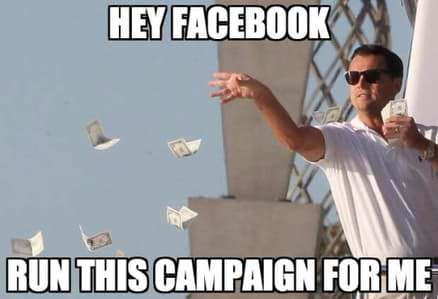Facebook explains why you should wait before judging the performance of your campaigns. 2019 FB Ads benchmarks: Are you performing better or worse?
The Breakdown Effect
If you’ve heard of the FB Breakdown Effect, great! You know what we’re talking about here! However, if you’re like Henry Wang and you’re wondering what it is, well, just keep reading.
A common point of confusion is that Facebook’s system appears to shift impressions into underperforming ad sets, placements or ads.
But, in reality, the system is designed to give you the best results at the campaign level, based on the ad set optimization you choose.
Here’s the example that Facebook came up with to explain this effect:
Let’s say that you launch a conversion campaign. You have one creative asset and you pick two placements: Facebook Stories and Instagram Stories. The budget is $500 for the whole campaign with a single ad set.
In the beginning, the CPA on FB Stories is $0.35. While on IG Stories, it’s $0.72. However, as the campaign goes on, IG Stories receives more budget.
Have you experienced something similar?
At the end of the campaign, FB Stories spent $50, while IG Stories $450. Why?
“At the start of the campaign, the system began delivering ads to both platforms to explore where the lowest costs were. […] The system recognized that although Facebook Stories was driving the most efficient results initially, it predicted the cost was going to increase throughout the duration of the campaign.
Based on the anticipated rising costs, the system was able to pivot and shift the budget to Instagram Stories in order to drive a more efficient average CPA for the duration of the campaign.”
This is the reason we sometimes find that the reporting data doesn’t match up with our expectations.
FB knows how the costs will change during the campaign, and it shifts the budget accordingly.
And that’s the Breakdown Effect.
The lesson to learn? Don’t play about with your campaigns too much. It’s sad to say, but the FB ad platform is smarter than us mere humans.
So, it can predict how the campaign will run more accurately, and work accordingly to deliver the best final results.
This Breakdown Effect causes a lot of confusion among advertisers while they’re interpreting their Ads Manager stats. It might have happened to you as well.
But now…YOU KNOW WHY!

So, remember that Facebook will always work in your favor and create flexible campaigns with the lowest CPAs.
That’s all. Hopefully, we eliminated some of your fears and doubts. However, if you want to dive deeper into the Breakdown Effect and satisfy your nerd side, here’s the detailed explanation by Facebook.
Facebook Ads 2019 Benchmarks for industry
Struggling to judge the performance of your KPIs? You should probably have a look at this Facebook Ads benchmark released by WordStream.
The Benchmarks report has been shared by Rutger Thole, and it was created by analyzing the data of all WordStream clients.
You can find the averages across 18 industries for various KPIs such as Average Click-Through Rate (CTR), Average Cost per Click (CPC), Average Conversion Rate (CVR), and Average Cost per Action (CPA).
You can find all the data here.
However, keep this in mind: The objective of your campaigns, the price range of your product or service and the audience and positioning will all influence the KPIs.
For example, a campaign with a conversion objective will have a higher CPC than a campaign with a traffic objective. Therefore, you should review the benchmarks accordingly.

